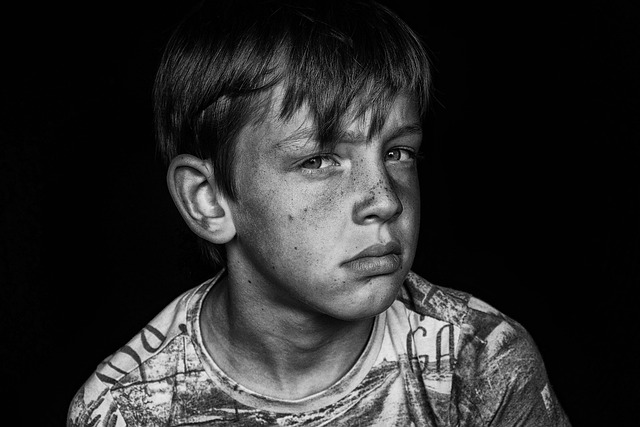9 Types of Borderline Personality Disorder
Borderline Personality Disorder (BPD) is a complex mental health condition marked by intense emotional instability, mood swings, and a pervasive difficulty with managing relationships. Though commonly referred to as a single disorder, BPD often manifests in different ways depending on an individual’s specific symptoms, environmental factors, and personal experiences. Here, we’ll explore the 9 types of borderline personality disorder to provide insight into the variations of this mental health condition.

What Is Borderline Personality Disorder?
Borderline Personality Disorder (BPD) is a serious personality disorder characterized by an unstable sense of self, self-destructive behaviors, and an intense fear of abandonment. People with borderline personality disorder often struggle with low self-esteem, experience mood swings, and find it difficult to maintain stable relationships. This personality disorder impacts their lives deeply, often leading to issues such as self-harm, substance abuse, and chronic feelings of emptiness.

The 9 Types of Borderline Personality Disorder
While the DSM-5 (Diagnostic and Statistical Manual of Mental Disorders) does not officially categorize BPD into specific subtypes, mental health professionals often refer to various presentations of BPD symptoms that fall into 9 different “types.” Each type represents a unique way that borderline personality disorder can impact a person’s life, relationships, and self-image.
Impulsive BPD
Individuals with impulsive BPD experience severe impulsivity, making decisions based on intense emotions and often engaging in impulsive behavior. This type is marked by emotional instability, difficulty with self-control, and impulsive actions such as binge eating, substance abuse, or reckless driving.
Self-Destructive BPD
Self-destructive BPD involves self-destructive tendencies such as self-harm, self-hatred, and even attempted suicide. Those with self-destructive BPD struggle with an unstable sense of self and often engage in behaviors that are harmful, sometimes due to feelings of self-hatred.
Discouraged BPD
Discouraged BPD is marked by chronic feelings of emptiness and low mood, which lead to a reliance on others for validation. These individuals may experience a desperate effort to avoid abandonment, placing others’ needs before their own in hopes of preventing rejection.
Petulant BPD
Petulant BPD features characteristics of explosive anger, mood swings, and emotional outbursts. People with petulant BPD may feel irritable, experience emotional instability, and find it difficult to maintain a stable sense of self-image.
Borderline Psychotic Symptoms
This type is characterized by temporary but severe psychotic symptoms under stress. Hallucinations, delusional thinking, and paranoia can manifest in moments of high emotional stress, making BPD diagnosis more challenging.
Mood-Swing BPD
Mood-swing BPD is a variation where mood swings are a dominant symptom. These individuals experience rapid shifts from intense emotions like anger to severe low mood, affecting their personal and social relationships.
Anxious BPD
People with anxious BPD are prone to experiencing anxiety disorders alongside BPD. They may have a strong need for approval, making desperate efforts to avoid abandonment, and often struggle with self-destructive tendencies due to overwhelming anxiety.
Environmental Influence BPD
Environmental factors play a significant role in shaping the symptoms of environmental influence BPD. Traumatic experiences in early childhood can result in difficulty regulating emotions, unstable relationships, and a fear of abandonment.
BPD with Co-occurring Mental Disorders
This type includes those who, in addition to BPD, are diagnosed with other personality disorders or mental health conditions such as bipolar disorder. This combination of diagnoses can exacerbate symptoms and complicate treatment, emphasizing the need for an accurate diagnosis.

Understanding the Diagnostic Criteria
The diagnostic criteria for borderline personality disorder, as defined by the Diagnostic and Statistical Manual, emphasize symptoms like chronic feelings of emptiness, unstable relationships, intense fear of abandonment, and impulsive behavior. An accurate diagnosis often requires a comprehensive review of specific symptoms, relationship issues, and environmental factors that may have shaped the individual’s experiences.
Treatment Options for BPD
BPD treatment typically involves dialectical behavior therapy (DBT), a specialized form of cognitive behavioral therapy (CBT) designed to help individuals find a middle ground between extreme emotions. DBT can be effective in reducing self-destructive behaviors and helping those with borderline personality disorder manage intense emotions. Additionally, the National Institute of Mental Health recognizes DBT as one of the most effective treatment methods for BPD.
Borderline Personality Disorder and Substance Abuse
People with borderline personality disorder often experience comorbid issues, such as substance abuse. Self-medicating with drugs or alcohol is common, as individuals attempt to cope with intense emotions, low mood, or self-destructive tendencies.
Frequently Asked Questions
What are the 9 types of borderline personality disorder?
The 9 types include impulsive BPD, self-destructive BPD, discouraged BPD, petulant BPD, borderline psychotic symptoms, mood-swing BPD, anxious BPD, environmental influence BPD, and BPD with co-occurring mental disorders.
What is the main cause of borderline personality disorder?
The exact cause is unknown, but a combination of genetic, environmental factors, and early childhood trauma often contributes to BPD development.
How is borderline personality disorder diagnosed?
Diagnosis involves assessing specific symptoms through a mental health evaluation based on the Diagnostic and Statistical Manual’s criteria.
Can borderline personality disorder be treated without medication?
Yes, dialectical behavior therapy (DBT) and other psychotherapies are the primary treatments, although medication may help manage specific symptoms.
How does BPD impact relationships?
BPD often leads to unstable relationships due to intense emotions, impulsive behavior, and a strong fear of abandonment, making it challenging to maintain long-term connections.
Conclusion
While borderline personality disorder share some similarities, they differ significantly in their symptoms and treatment approaches. Understanding these distinctions is essential for those living with these disorders and for the mental health professionals who support them. With the right therapy and coping skills, individuals with BP, more stable lives. Visit SAMHSA for more information or contact us today.





